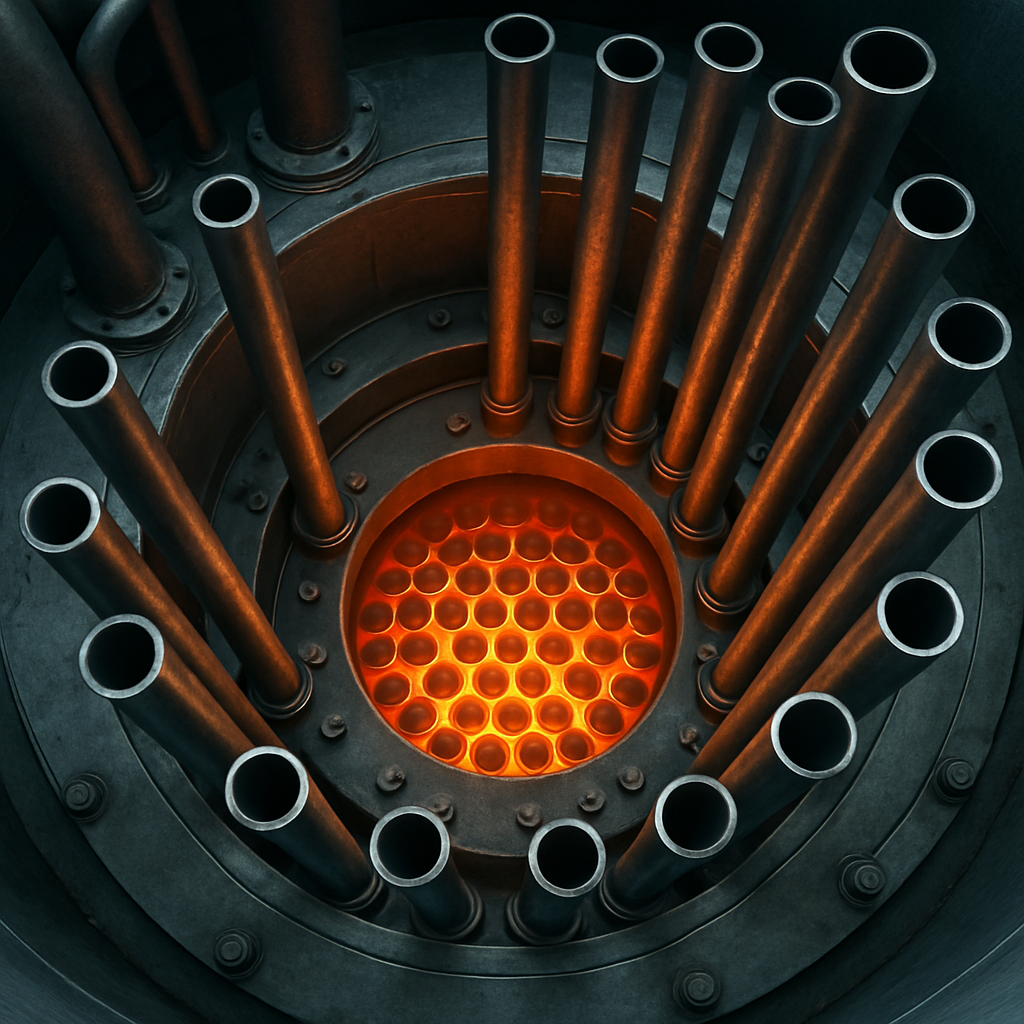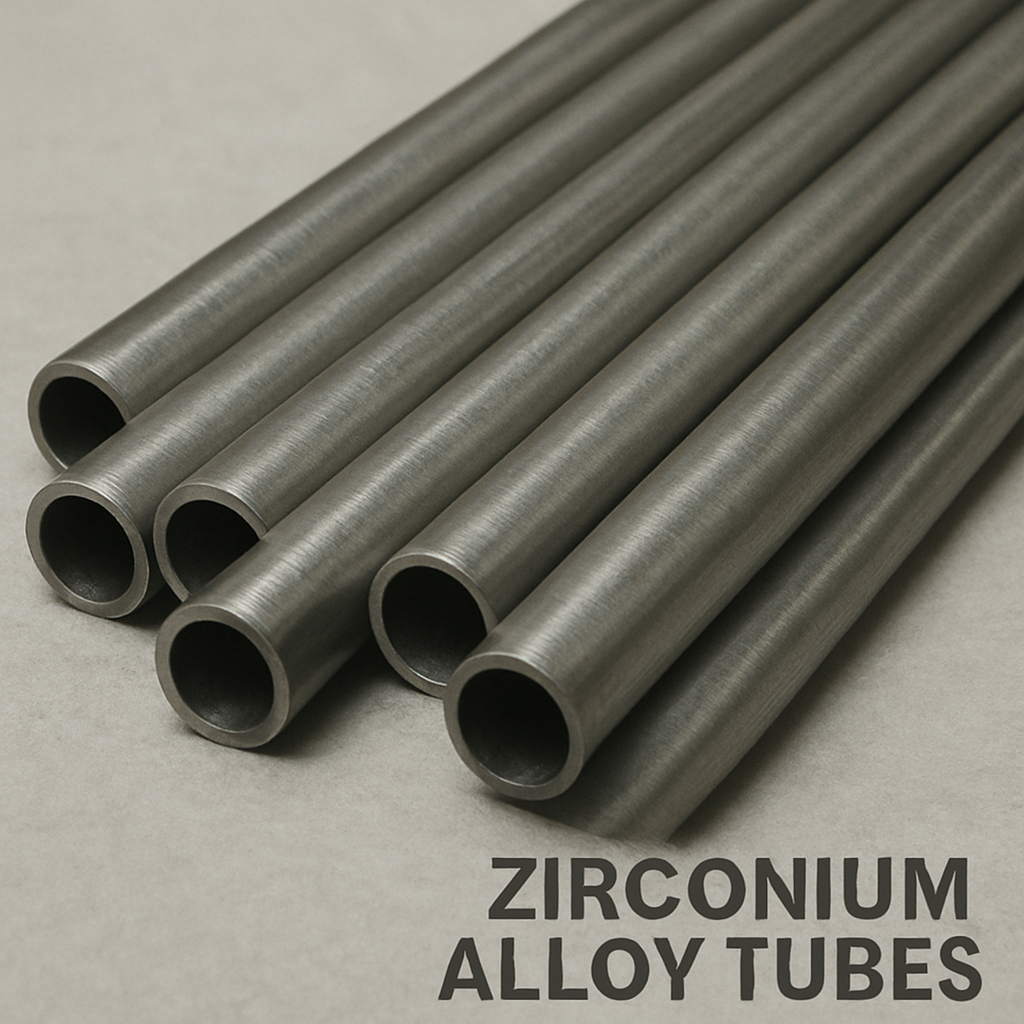- Danyang Yisheng, Your Trusted Partner for High-Quality Alloy Solutions!
Exceptional Corrosion Resistance: Designed for high-performance in extreme environments, such as nuclear reactors.
Heat & Stress Tolerance: Withstands high temperatures and radiation exposure.
Applications: Used in nuclear power plants for tubing, piping, and reactor components.
Materials: Typically involves alloys like Inconel, Hastelloy, and titanium-based alloys.
In the demanding environment of nuclear reactors, the materials used must withstand extreme conditions, including high temperatures and corrosive substances. This is where corrosion-resistant alloys come into play. These materials are essential for ensuring the longevity and safety of nuclear plant operations, particularly in the construction of tubular components. Let’s delve into the world of these high-performance alloys and understand why they are indispensable in nuclear applications.
 The Importance of Tubular Materials in Nuclear Reactors
The Importance of Tubular Materials in Nuclear ReactorsTubular materials are integral to the structure and function of nuclear reactors. They are used in heat exchangers, steam generators, and other critical components. In such settings, the ability to resist corrosion is not just an advantage—it’s a necessity. Corrosion can lead to leaks, contamination, and even catastrophic failures, making the choice of material crucial for the safe operation of nuclear facilities.
High-performance alloys are designed to endure the harsh environments found in nuclear reactors. These alloys combine various metals to enhance their properties, especially their resistance to corrosion and high temperatures. Let’s explore some of the most commonly used alloys in nuclear tubulars.
Stainless steel is one of the most popular choices for nuclear applications due to its excellent corrosion resistance and mechanical properties. It contains chromium, which forms a passive layer of chromium oxide on the surface, protecting the material from further corrosion. Grades like 304 and 316 stainless steel are widely used in nuclear reactors.
Nickel-based alloys are renowned for their superb corrosion resistance, especially in environments where stainless steel might fail. Alloys such as Inconel and Hastelloy are commonly used in nuclear reactors for their ability to withstand extreme temperatures and corrosive conditions.
Zirconium alloys are particularly favored in nuclear reactors due to their low absorption cross-section for thermal neutrons, making them ideal for fuel cladding. These alloys are highly resistant to corrosion in high-temperature water and steam, which is typical in nuclear environments.
 Why Corrosion Resistance Is Crucial in the Nuclear Industry
Why Corrosion Resistance Is Crucial in the Nuclear IndustryThe nuclear industry demands materials that can withstand not only the physical stress of operation but also the chemical exposure inherent in nuclear processes. Here’s why corrosion resistance is a key consideration:
Corrosion can compromise the structural integrity of reactor components, leading to potential leaks and failures. Using corrosion-resistant alloys ensures that these components maintain their integrity over the reactor’s operational life, enhancing safety and longevity.
While corrosion-resistant alloys might have a higher upfront cost compared to traditional metals, they offer significant savings over time. Their durability reduces the need for frequent replacements and repairs, thereby lowering maintenance costs and minimizing downtime.
Preventing corrosion in nuclear reactors also helps protect the environment. Leaks caused by corrosion can lead to contamination of surrounding areas, posing serious environmental risks. Corrosion-resistant alloys help mitigate this risk by ensuring that reactor components remain intact.
Choosing the right alloy for nuclear tubulars depends on various factors, including the specific application, environmental conditions, and regulatory requirements. Here are some considerations to keep in mind:
Different alloys perform better under certain temperature and pressure conditions. For instance, while stainless steel is suitable for moderate environments, nickel-based alloys might be necessary for more extreme conditions.
The chemical environment within the reactor, such as exposure to water, steam, or other chemicals, will influence the choice of alloy. Understanding these conditions helps in selecting materials that will offer the best corrosion resistance.
Nuclear applications are subject to strict regulations and standards. Ensuring that the chosen materials meet these standards is crucial for compliance and safety.
The development of new alloys and improvements in existing ones continue to enhance the performance of materials used in nuclear reactors. Research and innovation are focused on increasing the corrosion resistance and mechanical strength of these alloys, ensuring they can meet the evolving demands of the nuclear industry.
New materials and coatings are being developed to further improve the corrosion resistance of nuclear tubulars. These innovations aim to extend the lifespan of reactor components and enhance their safety features.
Advancements in testing and analysis techniques are allowing for more accurate assessments of alloy performance in nuclear environments. This ensures that the materials used are of the highest quality and capable of withstanding the rigors of reactor operations.
Corrosion-resistant alloys are vital to the safe and efficient operation of nuclear reactors. By understanding the properties and applications of these materials, industry professionals can make informed decisions that enhance the safety, longevity, and performance of nuclear facilities. As technology advances, so too will the capabilities of these remarkable alloys, continuing to safeguard the future of nuclear energy.
